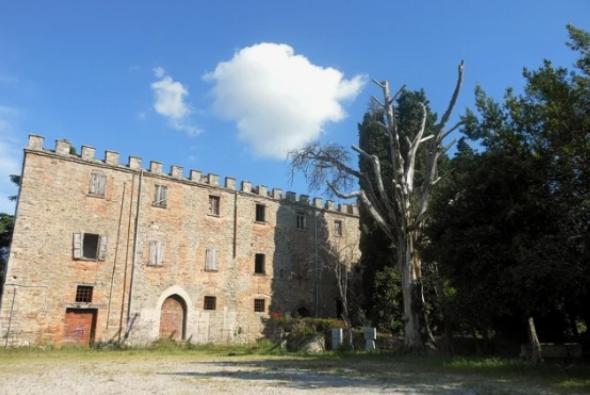Castle of Cibottola

The Castle of Cibottola at 471 m asl, built around the 9th century, rises to the south-east of Pietrafitta on the top of a hill in the valley of the Nestore river.
The toponym derives from Maurizio Cybo, governor of Perugia (15th century) who established popular granaries, the horreola, from which Cyborreola, ie Cybo granaries, from which the current Cibottola would then derive. The oldest genesis of the name could go back to Cibizio, a lucumone from Perugia, or to Cibonia, an Etruscan town, or to Chibertola, of which little information is available. Cibottola was frequented assiduously from the Middle Ages due to its proximity to the convent of S. Bartolomeo (today only a ruin engulfed by vegetation), where San Francesco d'Assisi, Sant'Antonio da Padova and San Bonaventura stayed; in 1416 he restored Braccio Fortebracci on the march against Perugia.
The village
Of the ancient settlement, the entrance door, the very particular heptagonal tower (seven sides) 20 meters high and most of the walls are still visible and can be visited, because it belongs to the municipality. Everything else is in private hands.
The parish church, dedicated to S. Fortunato, was built before the year 1000, the roof of the single nave rests on three arches with exposed beams, while a barrel vault and sails cover the presbytery. Numerous and discreetly preserved are the frescoes in the right span: five each depict a saint, where the Byzantine trait is evident and a Madonna and Child of Giotto inspiration. The main altar is dominated by the panel of the Blessed Virgin with Child from 1944 and presents in the background a view of the castle of Cibottola and the convent of San Bartolomeo.